Education
Start your journey
Being diagnosed with a Venous Leg Ulcer can be worrying when you don’t know the impact this will have on your life. It is natural to have lots of questions and concerns. The Legs Go Programme has been created to help patients and their families understand how to live with their condition.
When you’re first diagnosed with a leg ulcer, you’ll understandably have lots of questions, and feel anxious about the ways that your life might change. You might wonder ‘what is the point?’ when it comes to living a healthier lifestyle.
Let’s start off by addressing some of the queries and concerns you might have before launching into the different ways you can improve your health.
Everyone’s condition and lifestyle are different, but there are general things that you can consider.
How will a VLU affect my day-to-day life?
From exercise levels to carrying the groceries, your job, and your sleep pattern, what should you expect as you heal, and in what ways can having a leg ulcer impact the different aspects of your life? By thinking about these things and the practical ways improve your lifestyle, you can feel less anxious, and take your healing journey into your own hands.

Useful tips and advice
Click on each tab to learn more
Day-to-day
The day-to-day things, that you need to think about more than before, from sleep to bringing in the groceries.
My sleep:
Your Subtitle Goes Here
Lifting or carrying groceries:
Your Subtitle Goes Here
While lifting or carrying groceries, be mindful not to put excessive strain on the affected leg. Consider using a cart or asking for assistance to minimise the stress on the wound.
Bathing or dressing myself:
Your Subtitle Goes Here
Bending, kneeling, or stooping:
Your Subtitle Goes Here
Wearing my usual footwear:
Your Subtitle Goes Here
My relationships
My normal social activities with family, friends, neighbours, or groups:
Your Subtitle Goes Here
My reliance on others:
Your Subtitle Goes Here
The extent to which you rely on others depends on the severity of your condition and your level of mobility. It is likely that you will need increased support from those around you. Communicate your needs with your support system (friends and family) and your healthcare provider to determine appropriate levels of assistance.
My relationship with my partner:
Your Subtitle Goes Here
Exercise, activities, and work
Moderate activities, such as moving a table, pushing a vacuum cleaner, bowling, or playing golf:
Your Subtitle Goes Here
Climbing one flight of stairs:
Your Subtitle Goes Here
Walking more than a mile:
Your Subtitle Goes Here
Vigorous activities, such as running, lifting heavy objects, participating in strenuous sports:
Your Subtitle Goes Here
Climbing several flights of stairs:
Your Subtitle Goes Here
My ability to do my job:
Your Subtitle Goes Here
How the future looks with your condition
The time it will take to heal:
Your Subtitle Goes Here
Every healing journey is different, and so everyone’s healing goal is different. Whether it’s building up to getting out and about more, reducing the size of your wound, or total healing, discuss what is possible with your healthcare provider. By following a healthy lifestyle though, you can give yourself the best chance of healing sooner!
My comfort or pain levels:
Your Subtitle Goes Here
Exudate and odour which could affect my social and work life:
Your Subtitle Goes Here
Exudate and odour from the wound may be bothersome but can be managed with proper wound care and the right dressings. Consider using odour-control dressings and be strict with maintaining good hygiene practices to minimise any social or work-related impact and your worries about them.
The risk of my condition getting worse:
Your Subtitle Goes Here

Hearing from others can really help!
It is important to remember that you’re not alone! If you’d like to share your story we’d love to hear from you.
